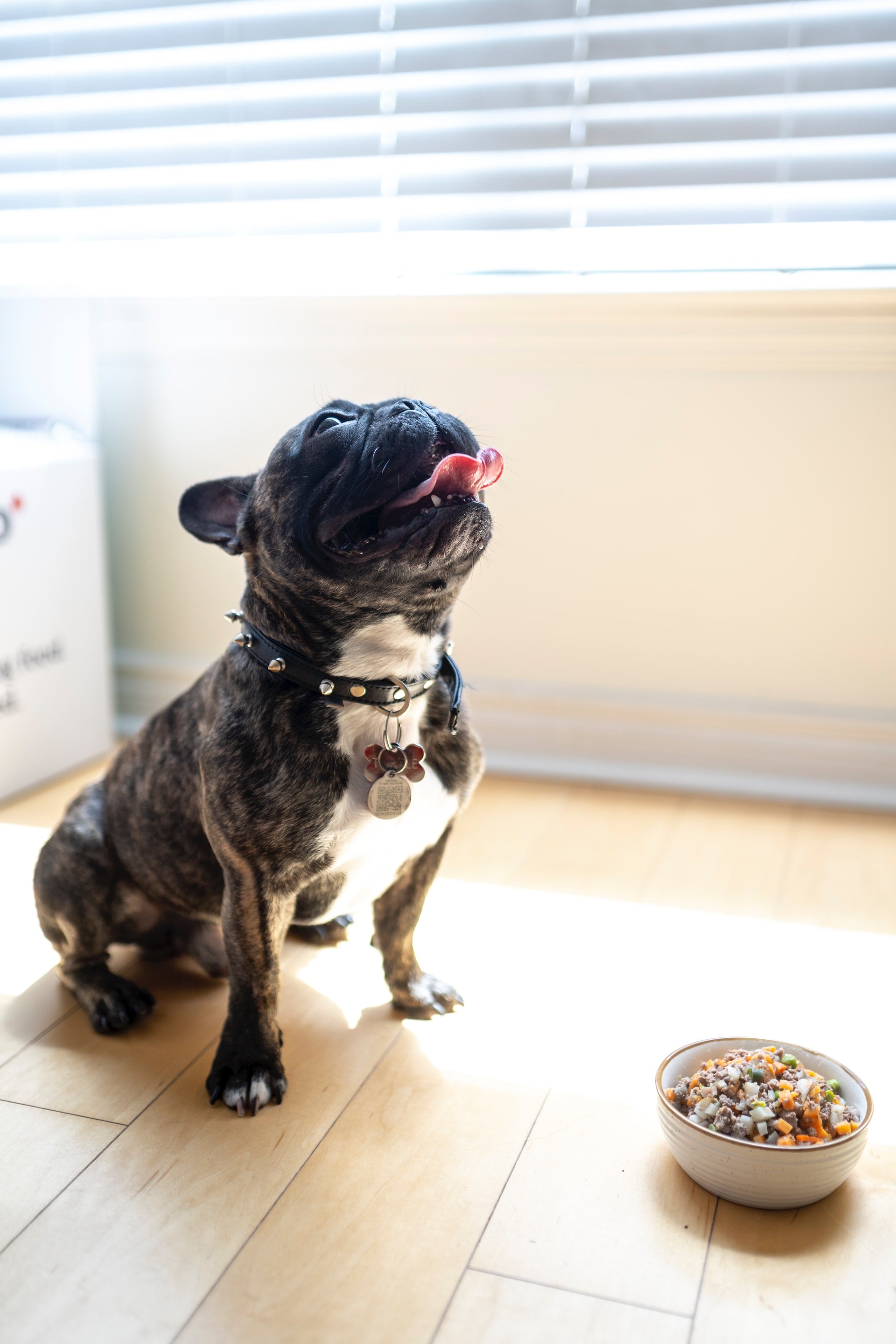Comparing Kibble, Canned Food, and Raw Diets
As pet owners, we’re responsible for making the best choices for our dogs. Because our dogs can’t choose their diets, they rely on us to give them food that is nutritional and, of course, delicious.
Every dog is different, so it’s important to be informed when choosing the right diet for your dog’s unique needs. When choosing what to feed your pooch, consider:
-
Current health. Does Fido have any allergies, or special dietary needs or restrictions? Do you need to cater to any illnesses or conditions? Is he overweight, or does he fall within the ideal weight range?
-
Activity level. Does your pup spend most of his time at home with you, or out hiking and adventuring? Is he a working or service dog who needs to stay alert and energetic?
-
Age. Dietary needs differ between puppies, adults, and seniors; pregnant and nursing dogs also have differing requirements.
-
Size and breed. The amount your dog needs to eat varies depending on his size. Additionally, dogs of certain breeds or sizes may be more at risk for skin issues or mobility problems, which can be affected by diet.
-
Taste. Of course, you want to make sure that you’re providing meals that are appetizing to your furry friend. There’s no need to force-feed Fido something he hates if there’s a perfectly fine alternative.
- Your lifestyle. How much time, energy, and money are you willing to spend shopping and/or cooking for your dog?
Some dog owners prefer raw diets; others prefer canned or dry food—there’s no “right answer.” Take these factors into consideration (and talk to your vet) before choosing or changing your dog’s diet.
What is Kibble?
Kibble, or dry food, is a convenient choice for many dog owners. It’s generally cost-effective, easy to store, and doesn’t have much risk of going bad.
However, kibble is controversial in some households due to its factors including processed ingredients, added colors and chemicals, and low moisture levels. That being said, kibble can be a perfectly fine option for your pooch. Under USDA regulation, dog food must be safe to eat, produced under sanitary conditions, contain no harmful substances, and be labeled accurately. The foods must also include: protein sources (such as beef, poultry, fish, or eggs); grains; cereals; vitamins; minerals; and antioxidants.

Choosing the Right Kibble
Not all kibble is created equal. Some brands have more carbs or sugar than necessary, or low-quality ingredients.
To make sure you’re choosing the right kibble for your canine, check the ingredients to be sure that protein is listed first. This is because labels list ingredients in weighted order, and you want the food you choose to have more protein than grain. Single-source proteins such as lamb and chicken are ideal.
Be aware of your pup’s food sensitivities when choosing the right brand of kibble. Some dogs have sensitivities to wheat, corn, or soybeans, so you’ll want to be sure you know which grain is used in your choice of dog food.
Grain-free diets are an option, but remember that carbohydrates are a good source of energy. If you’re considering going grain-free, be sure to talk to your vet first.
Canned Dog Food
Canned food, also referred to as wet food, also provides adequate nutrition. In fact, it’s preferable for some due to its moisture levels, which help to hydrate dogs and keep them full for longer periods of time.
Canned food is also ideal for dogs who have trouble chewing. It may also be more appetizing to some canines due to its texture and smell—especially to senior dogs whose sense of smell isn’t as strong as it used to be.
However, because of its moisture levels and risk of bacteria build-up, canned food can’t be left out as long as kibble. Once a can is opened, it must be refrigerated and used within two to three days.
Some dog owners alternate between the two depending on the situation; others prefer the best of both worlds, topping off a bowl of kibble with some wet food.
What About Raw Diets?
Raw diets, which are based off of the concept that dogs should eat the way their ancestors did, are growing in popularity. A raw diet generally consists of fresh, uncooked meats and bones as well as raw eggs, dairy, and dog-friendly vegetables. Dogs who eat raw diets tend to have shinier coats, healthier skin, cleaner teeth, more energy, improved digestion, and weigh a healthy amount.
However, a raw diet isn’t necessarily the right choice for all dogs and households. Some dogs—puppies included—need their food to be cooked, especially if there are existing health conditions such as pancreatitis or cancer. Because preparing a raw diet requires handling raw food, it may not be appropriate for a household with immunocompromised members or young children.
No matter which dietary decisions you make for your dog, keep in mind that the goal is to have a happy, healthy pup. If he falls within the ideal weight range for his breed, has healthy skin and a healthy coat, digests his food well, has good amounts of healthy energy, and has a good appetite, then you’re likely making all the right choices.
For dogs struggling with digestion, PetHonesty’s Digestive Probiotics Chews promote healthy digestion and intestinal health.
Sources:
https://www.akc.org/expert-advice/nutrition/feed-my-dog-fresh-raw-food-or-dog-kibble/
https://www.petmd.com/dog/nutrition/evr_multi_dry_versus_wet_food
https://www.hillspet.com/dog-care/nutrition-feeding/wet-vs-dry-dog-food
https://www.dogfoodadvisor.com/choosing-dog-food/canned-or-dry-dog-food/













